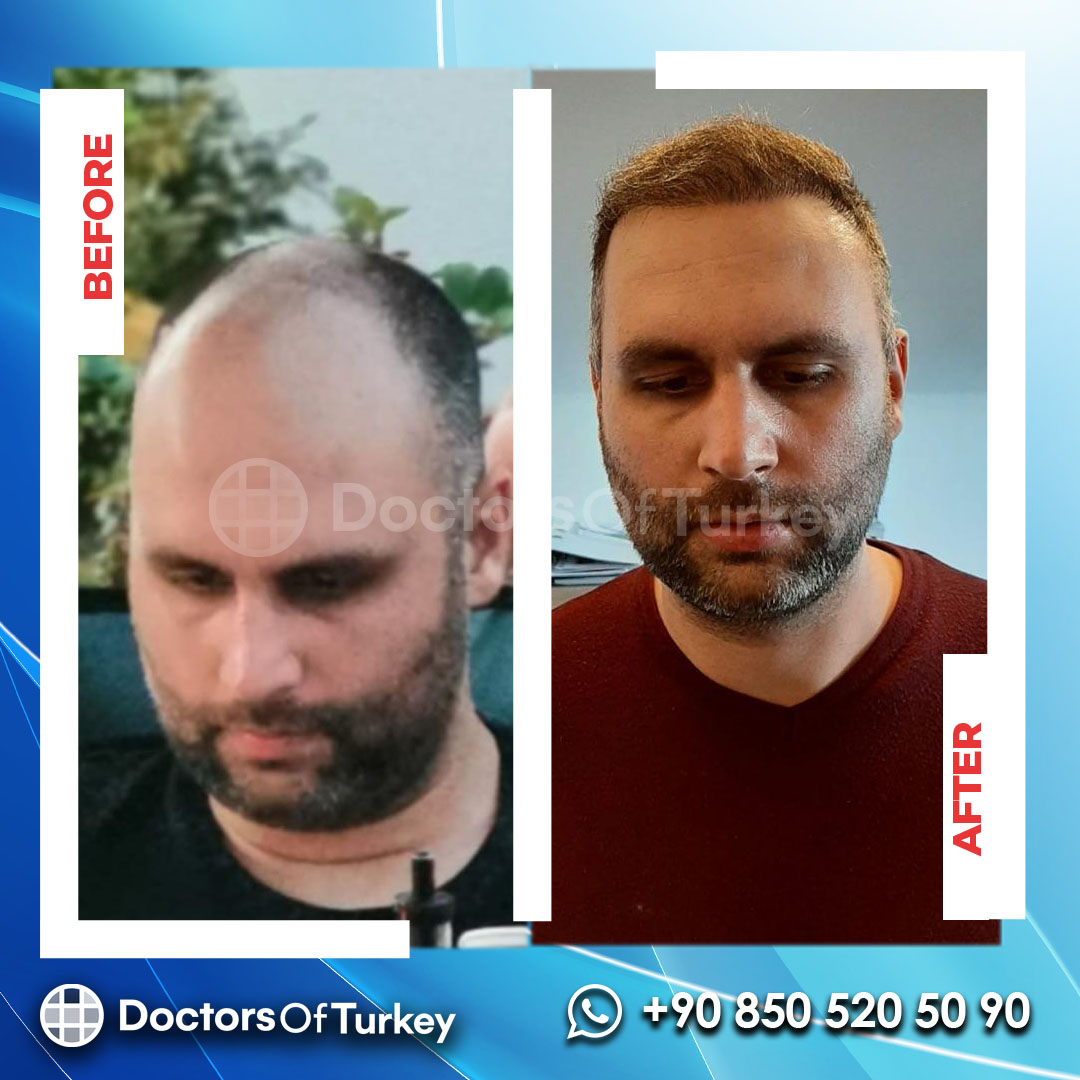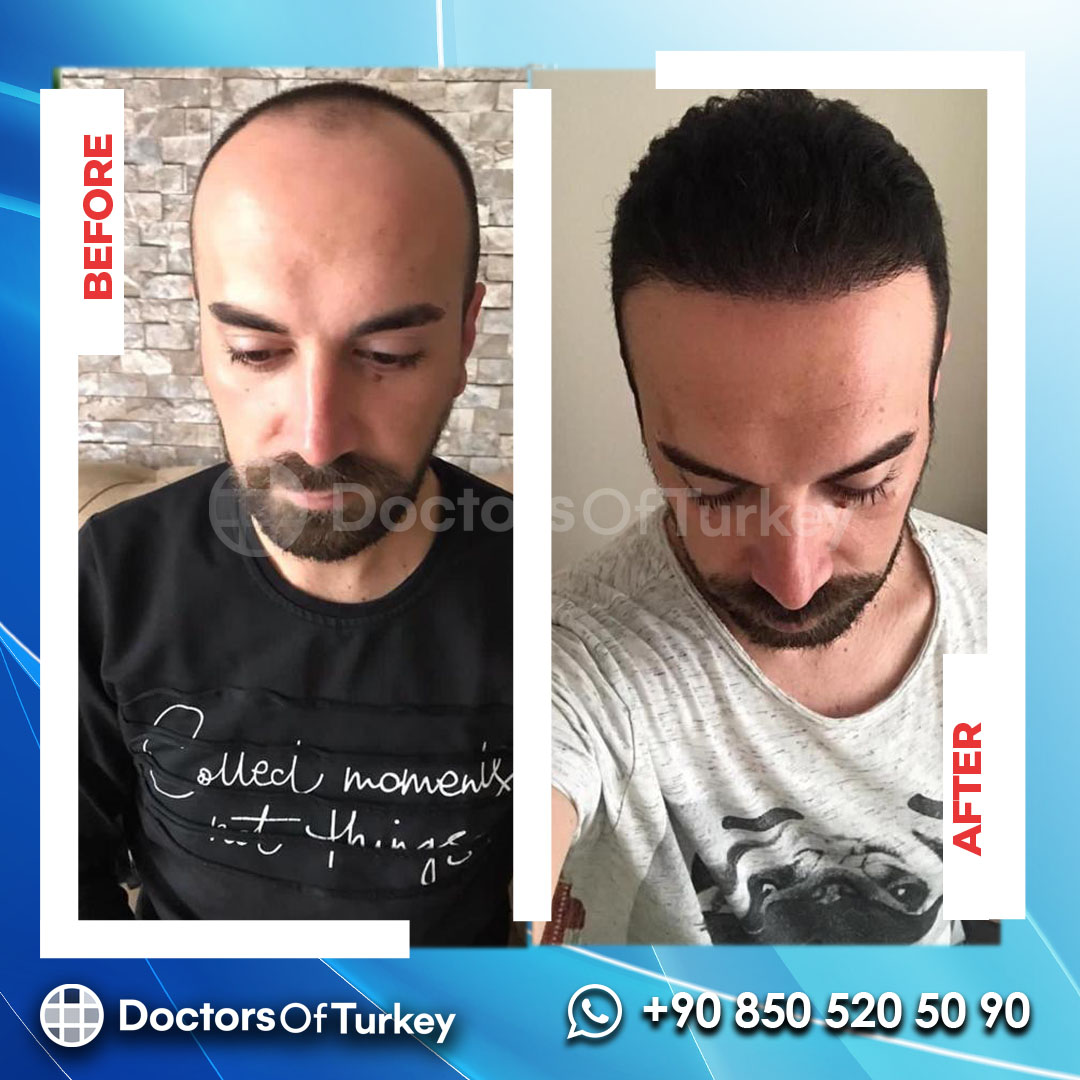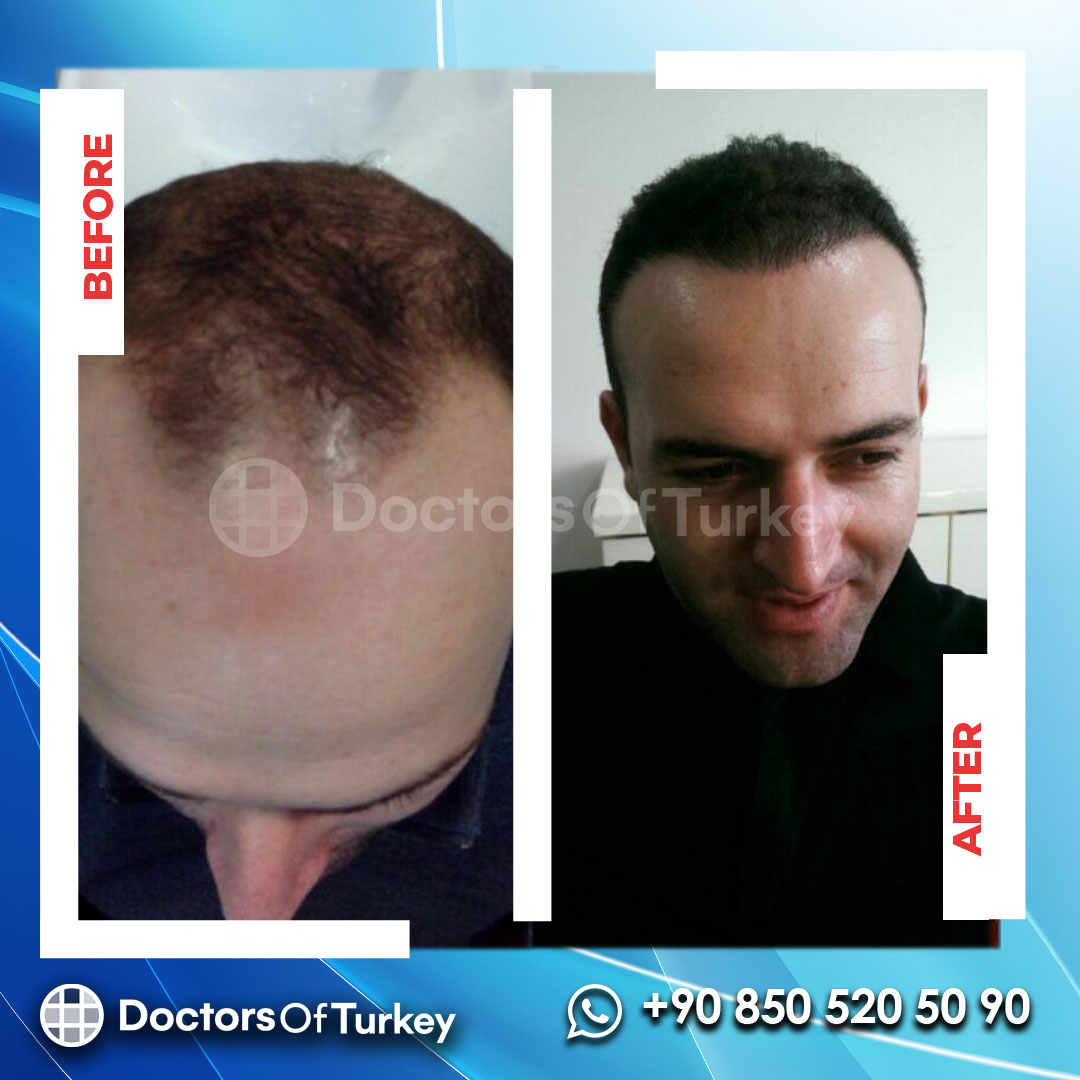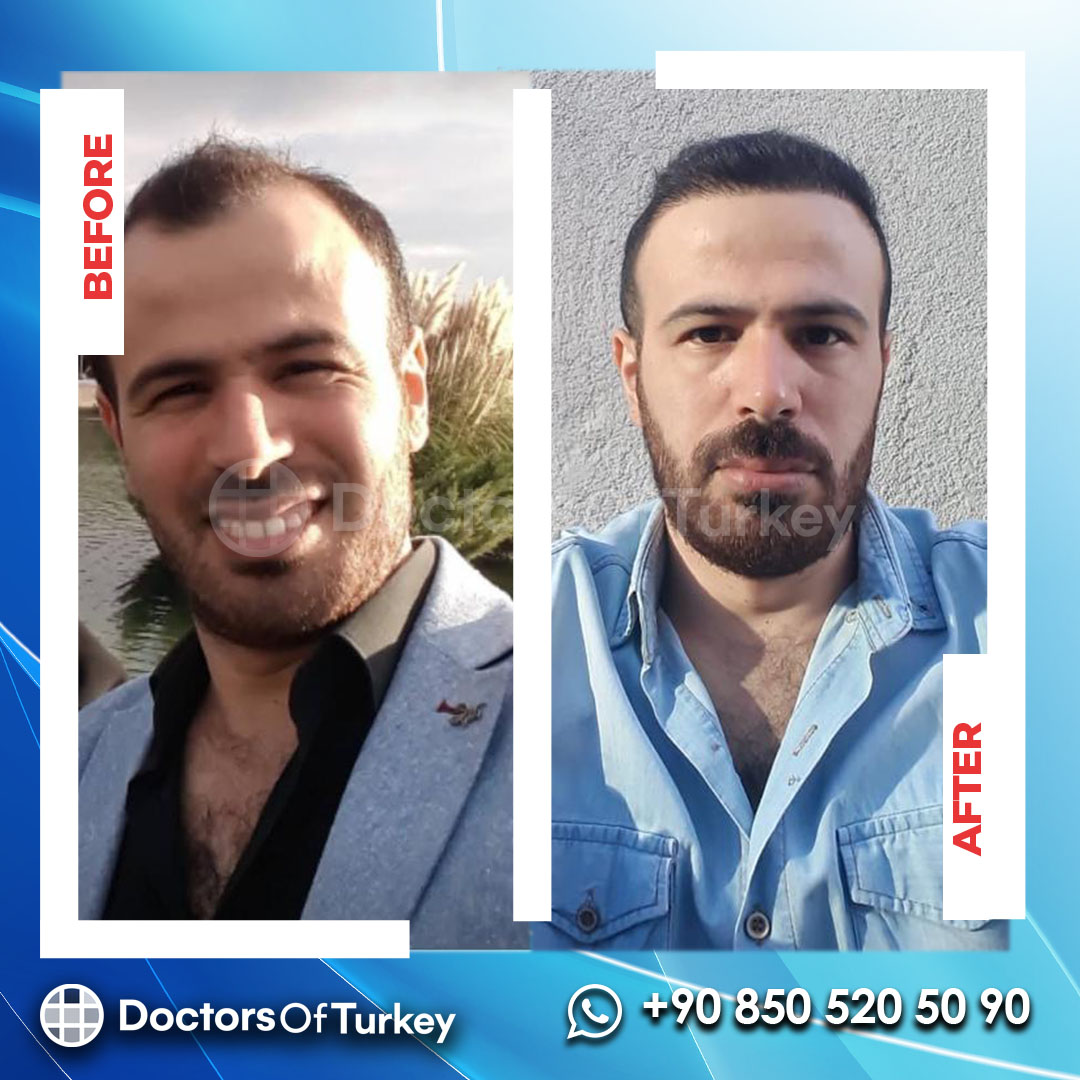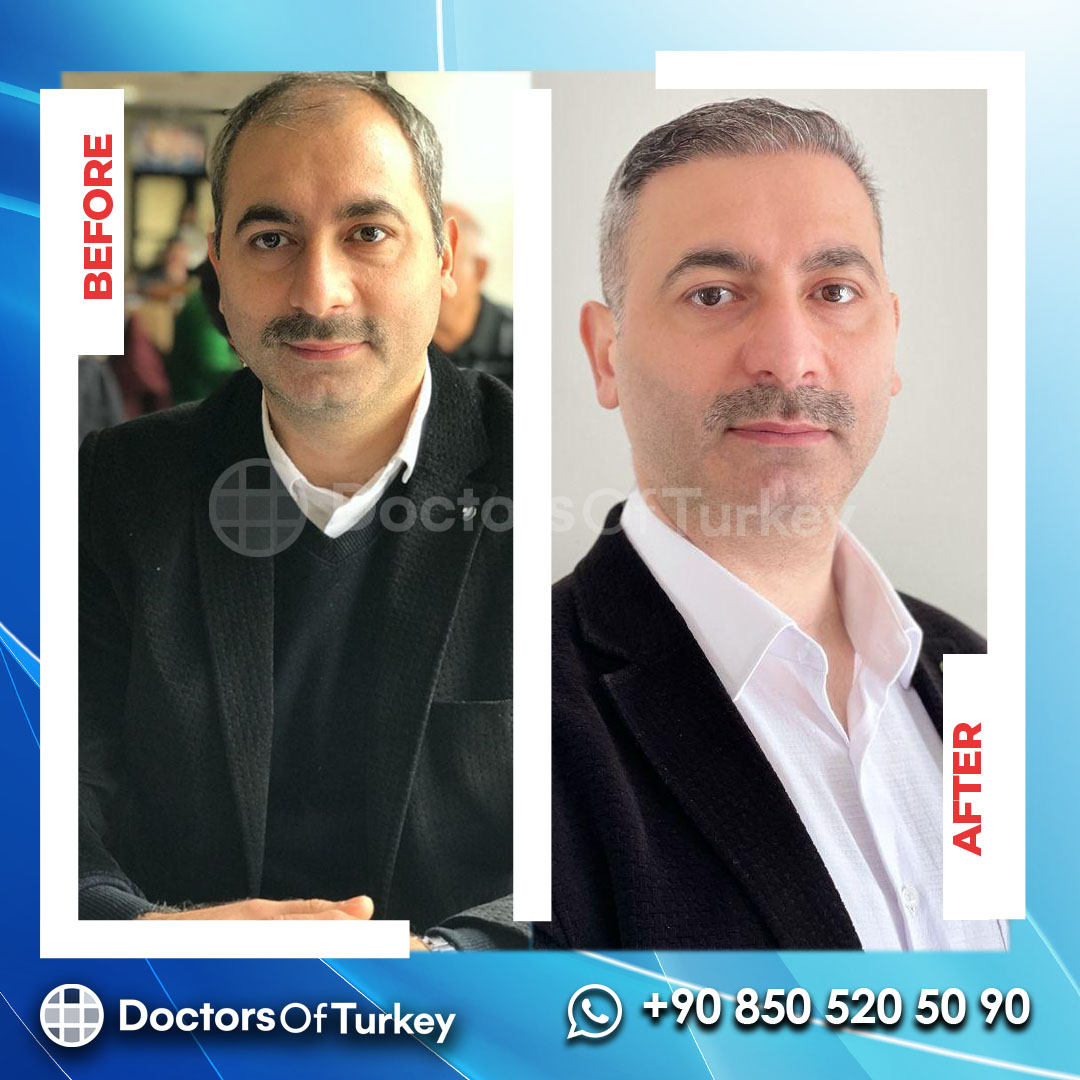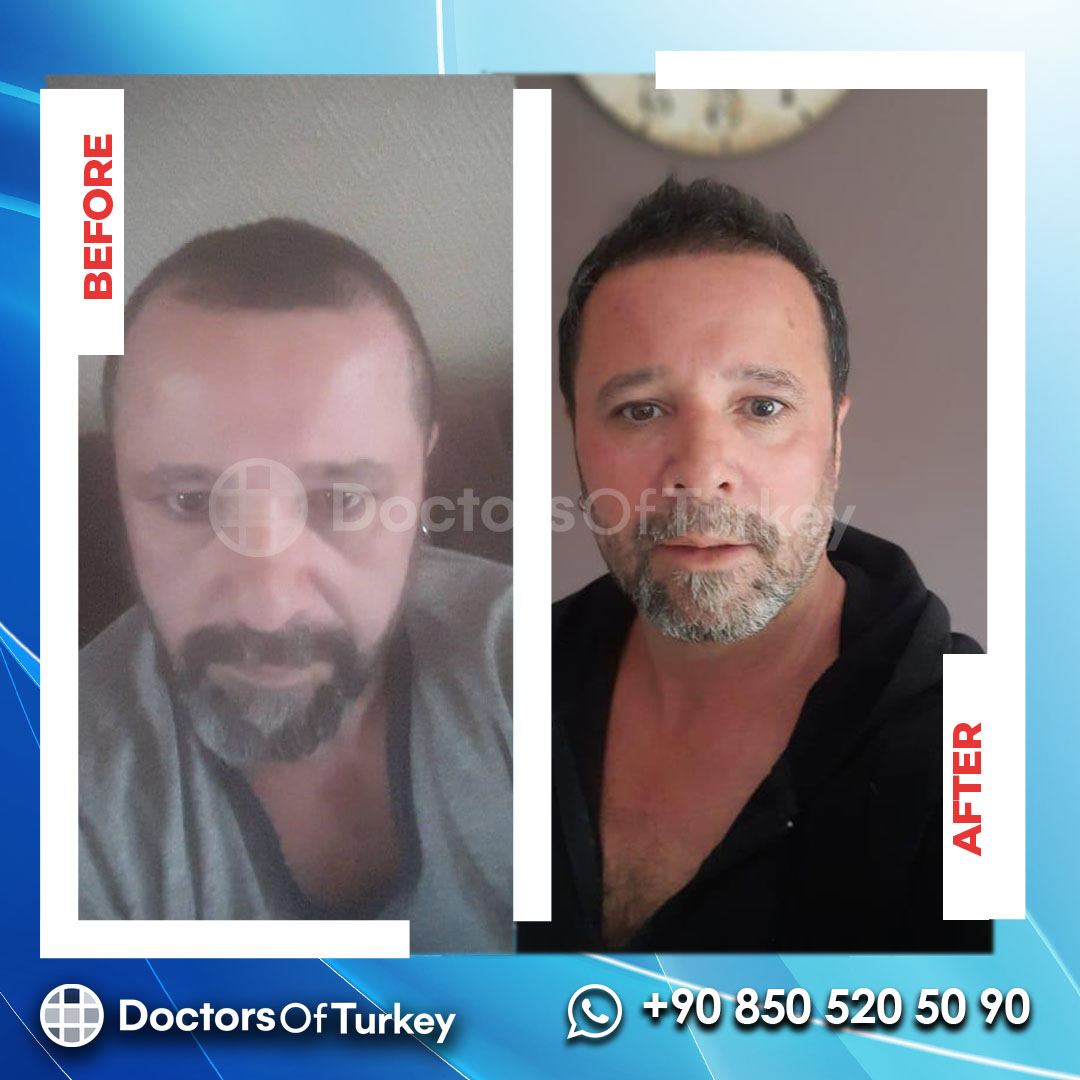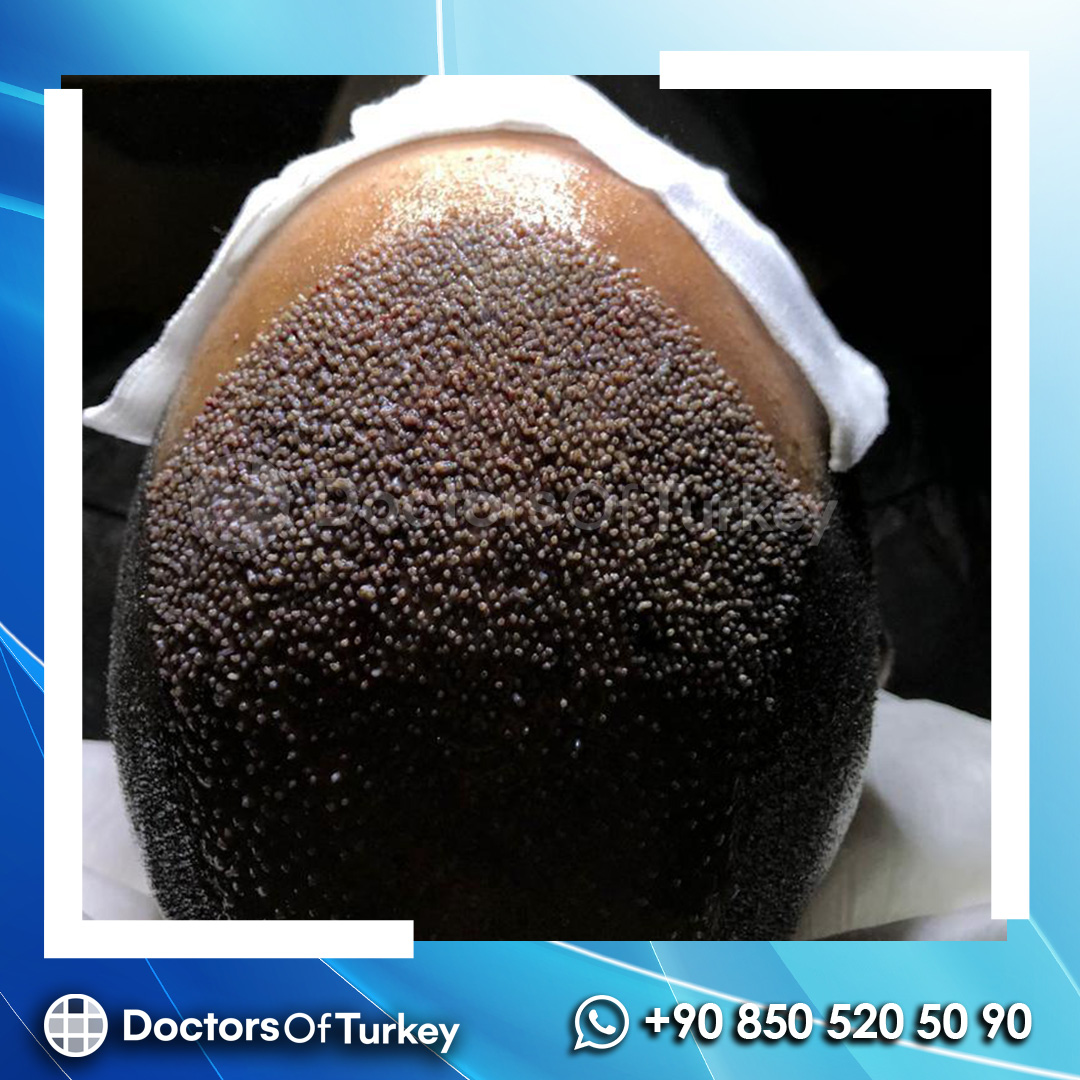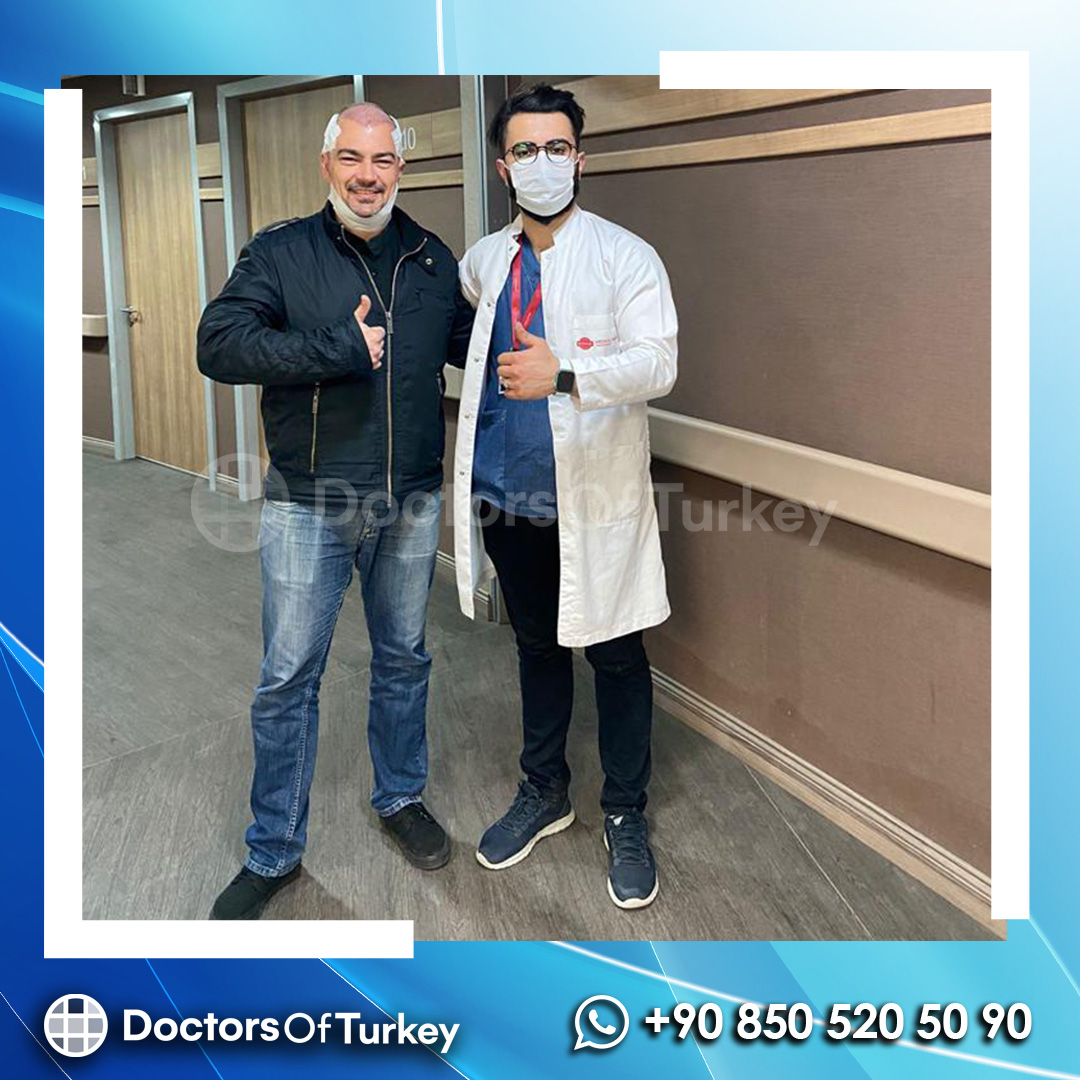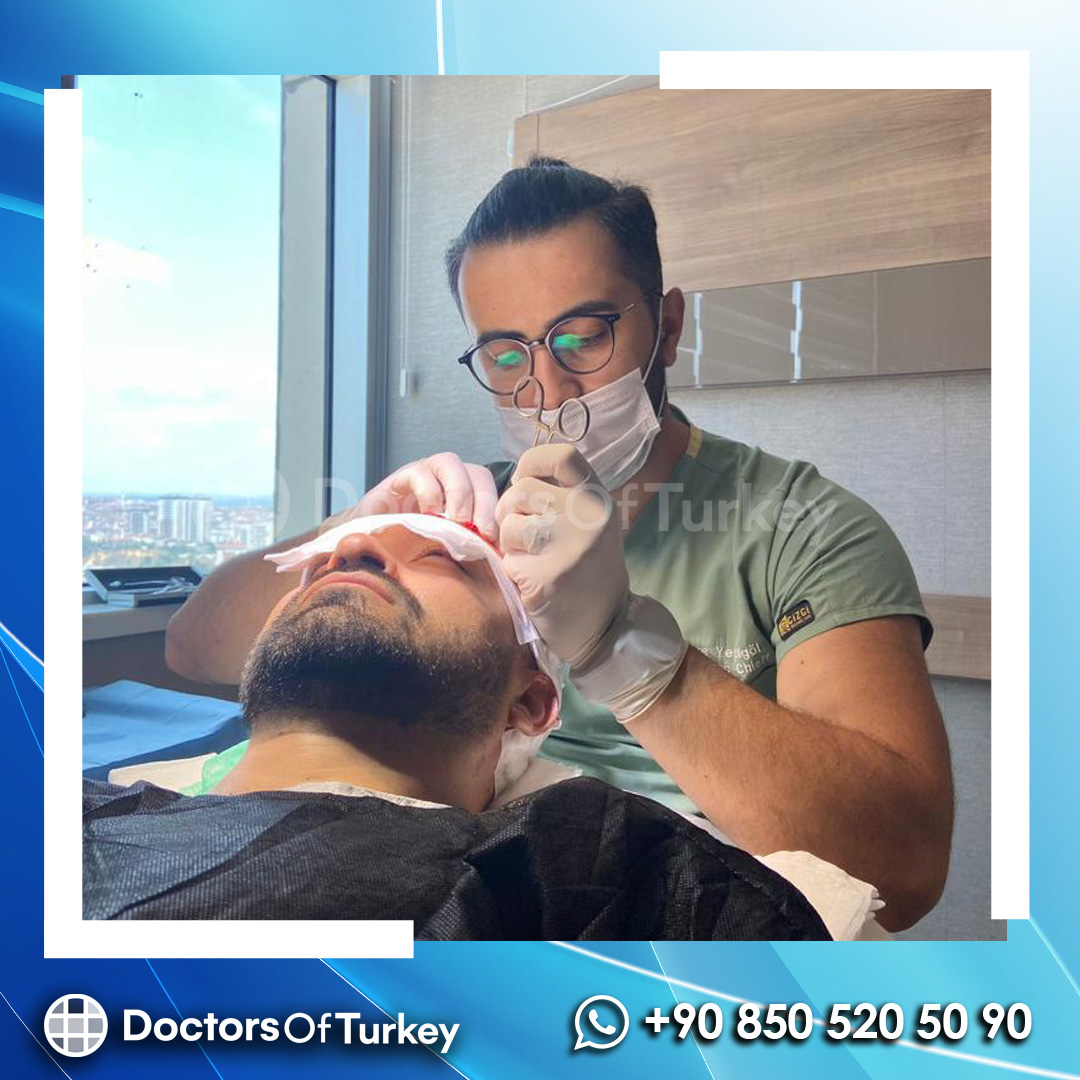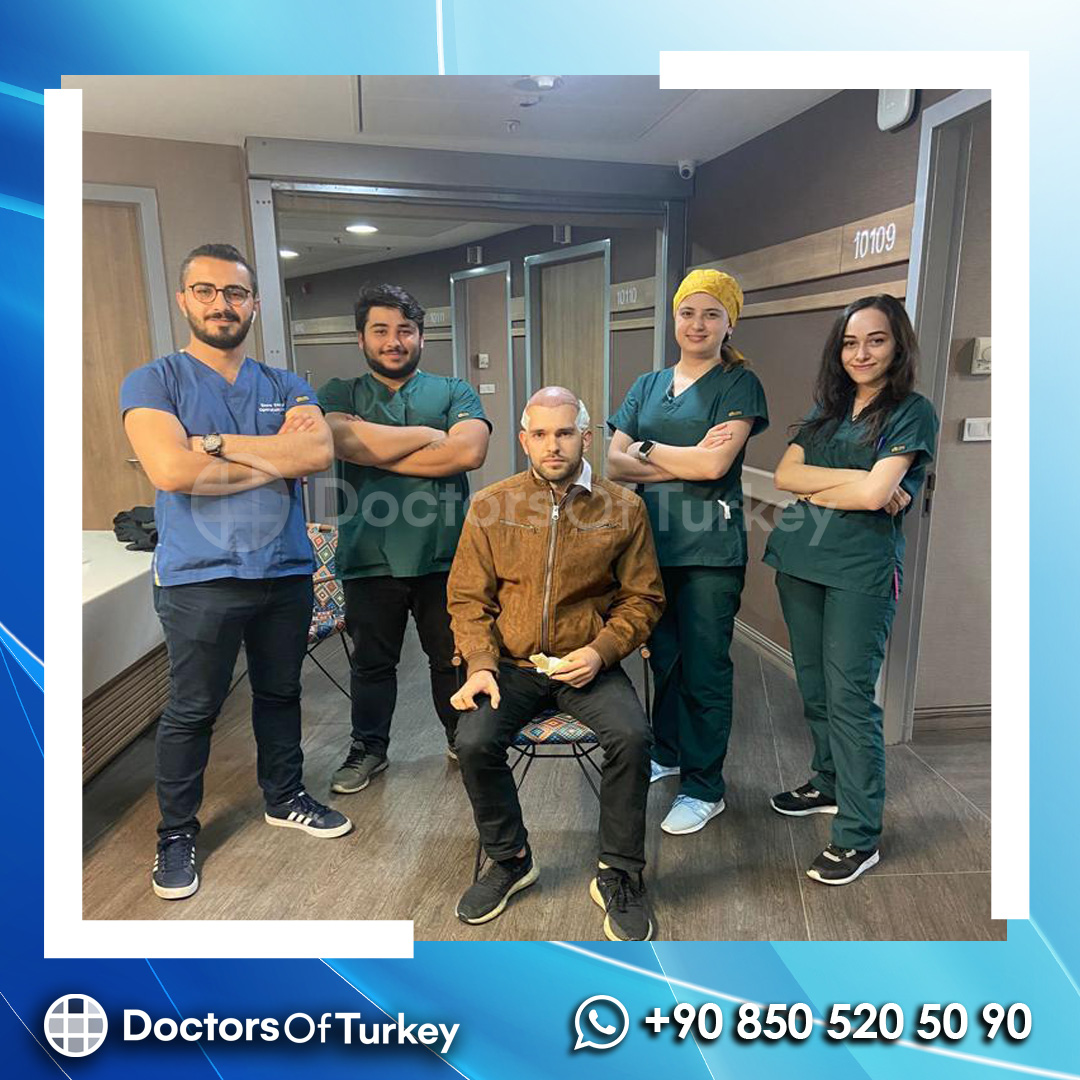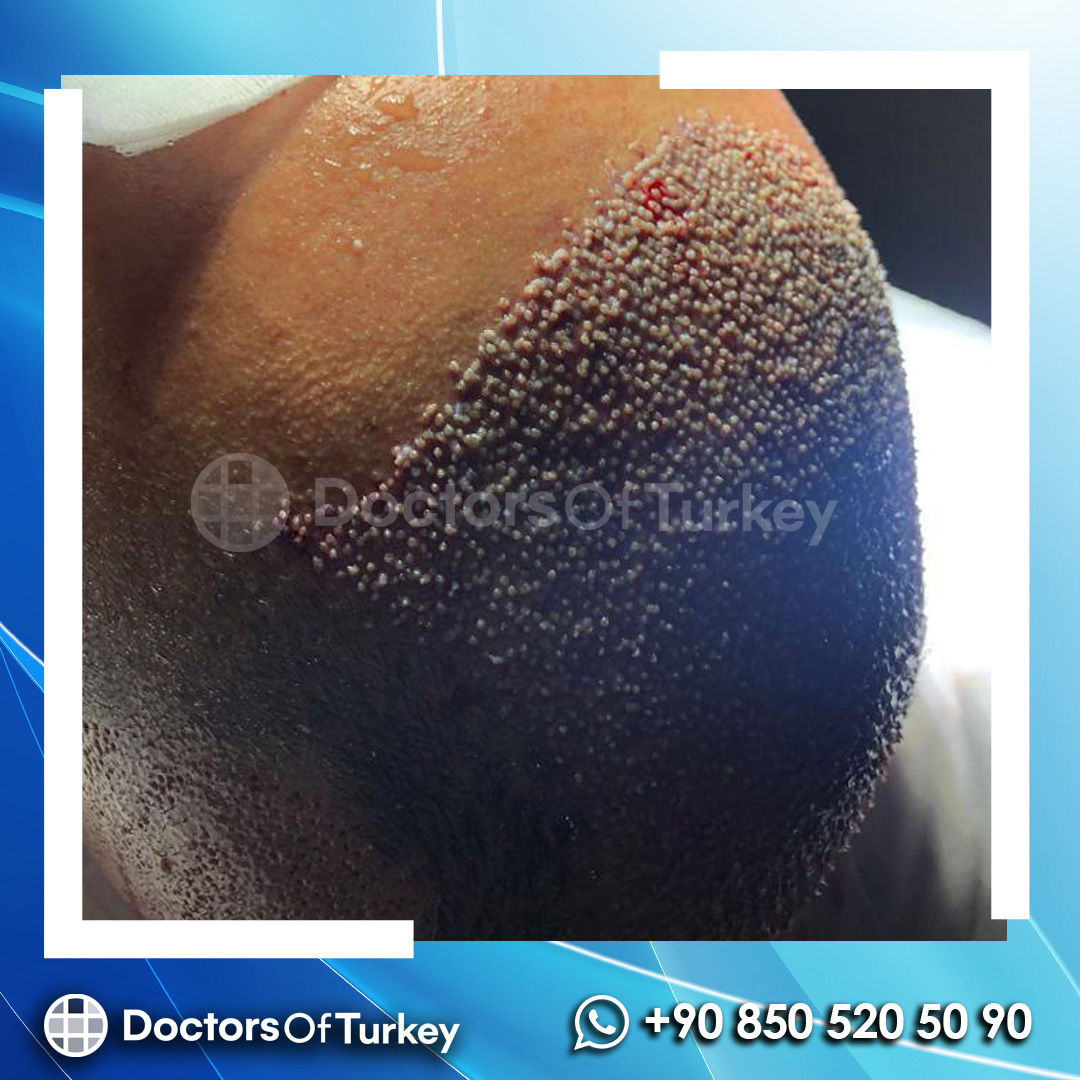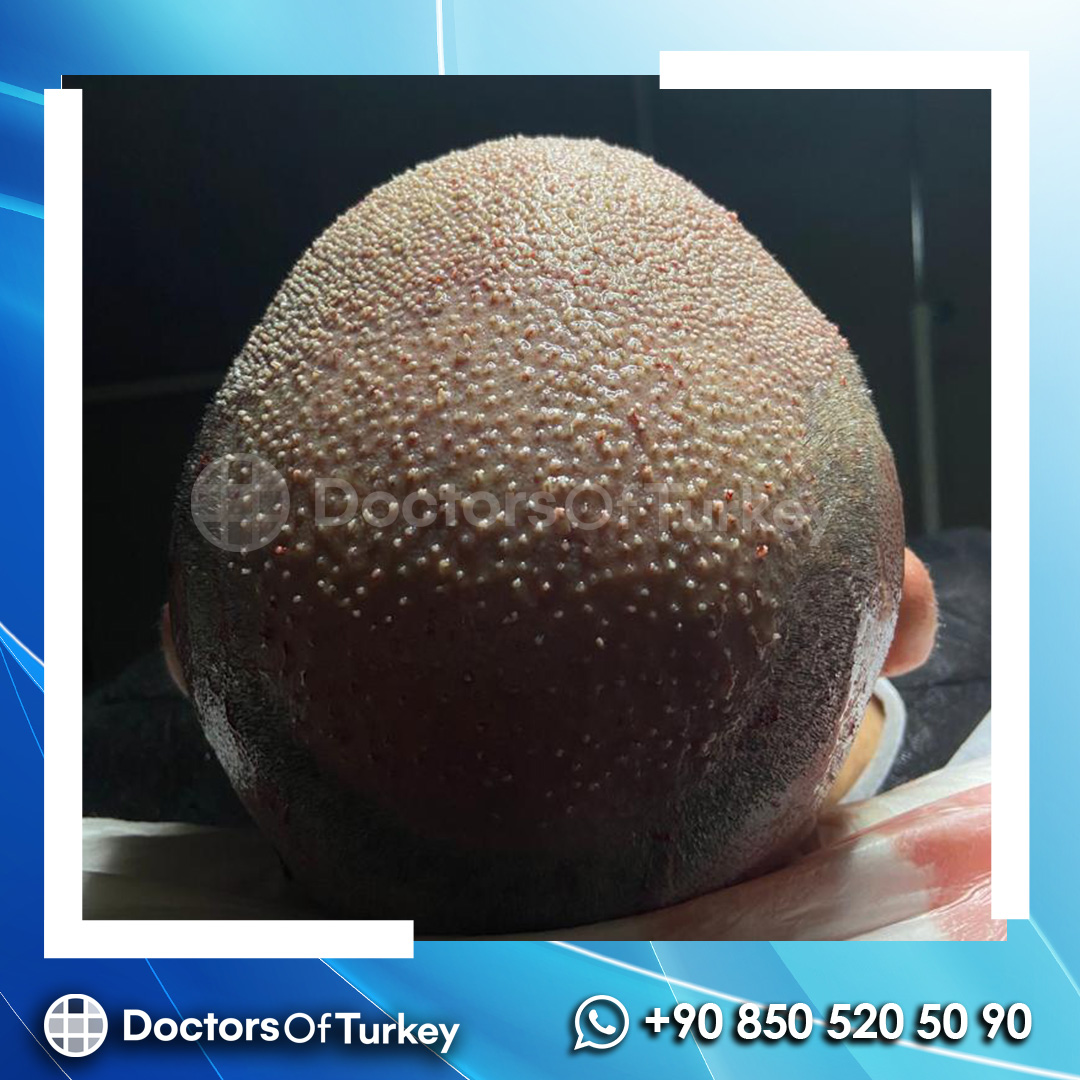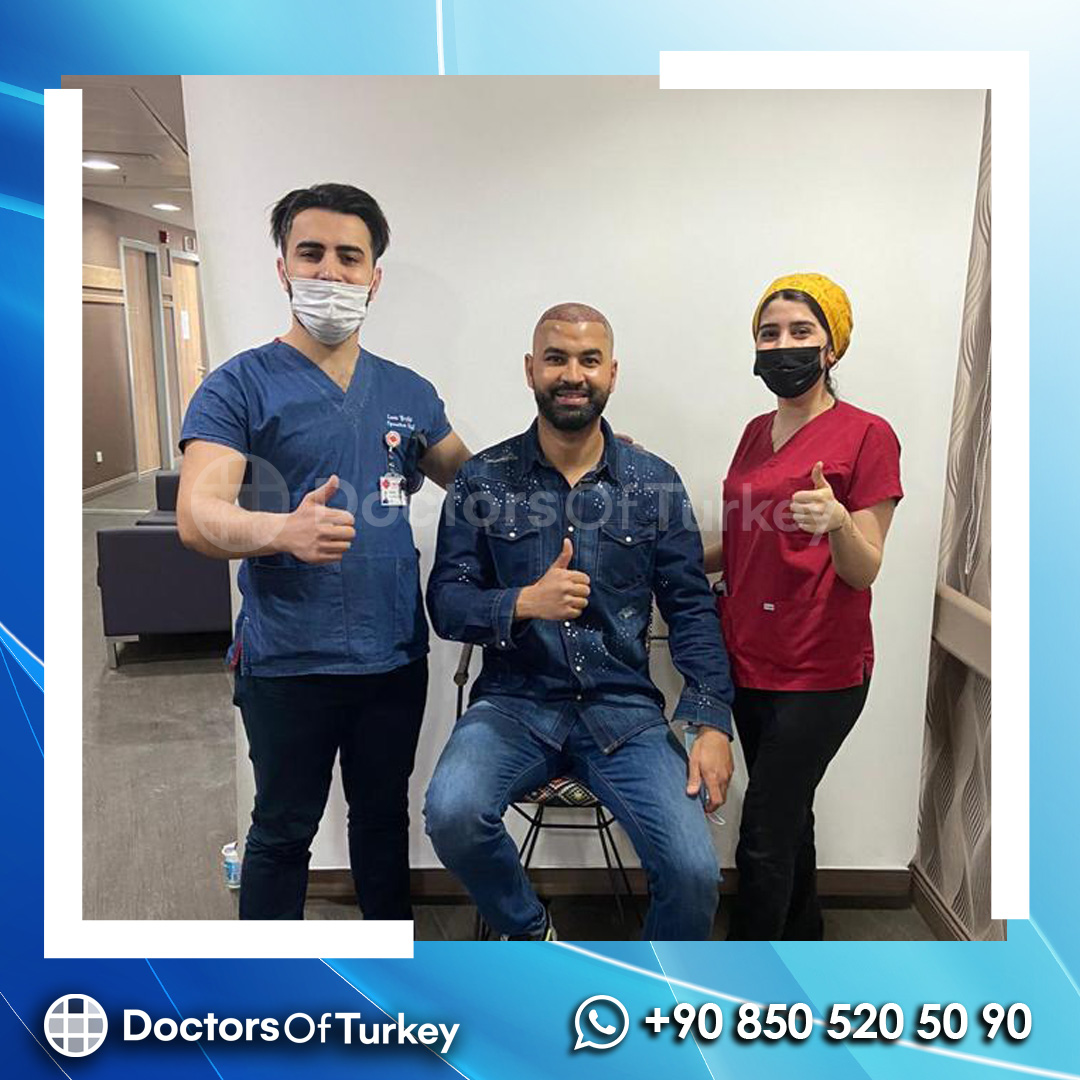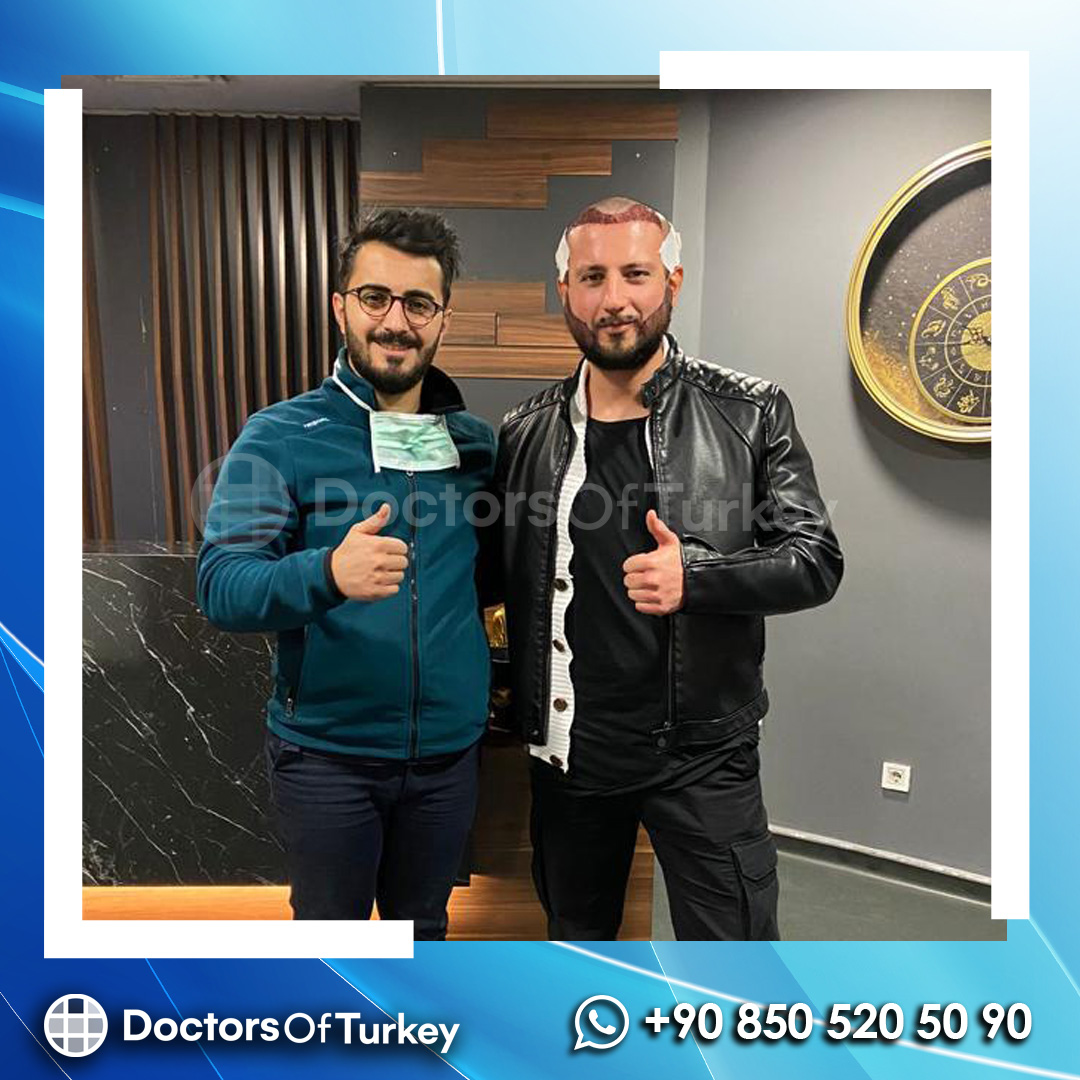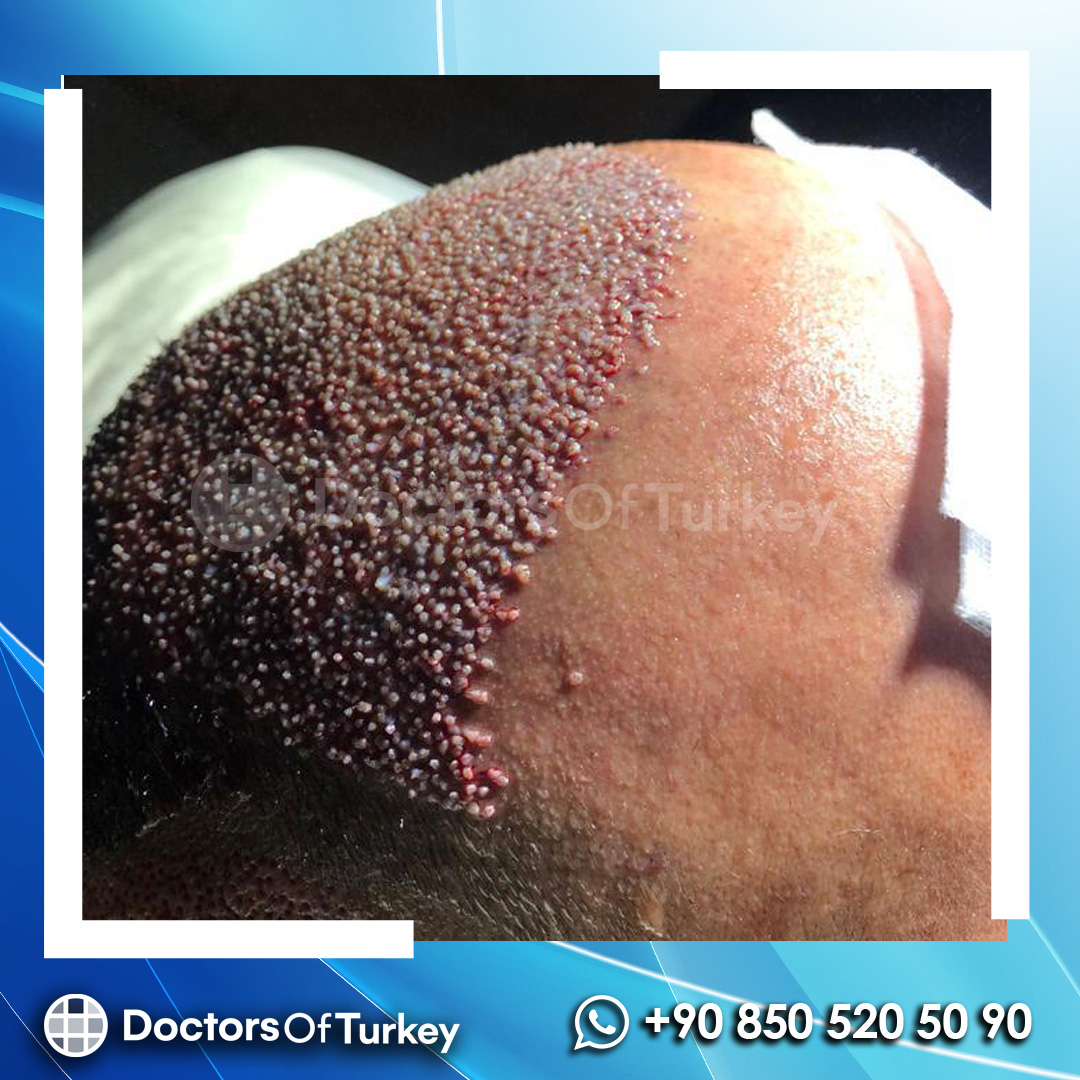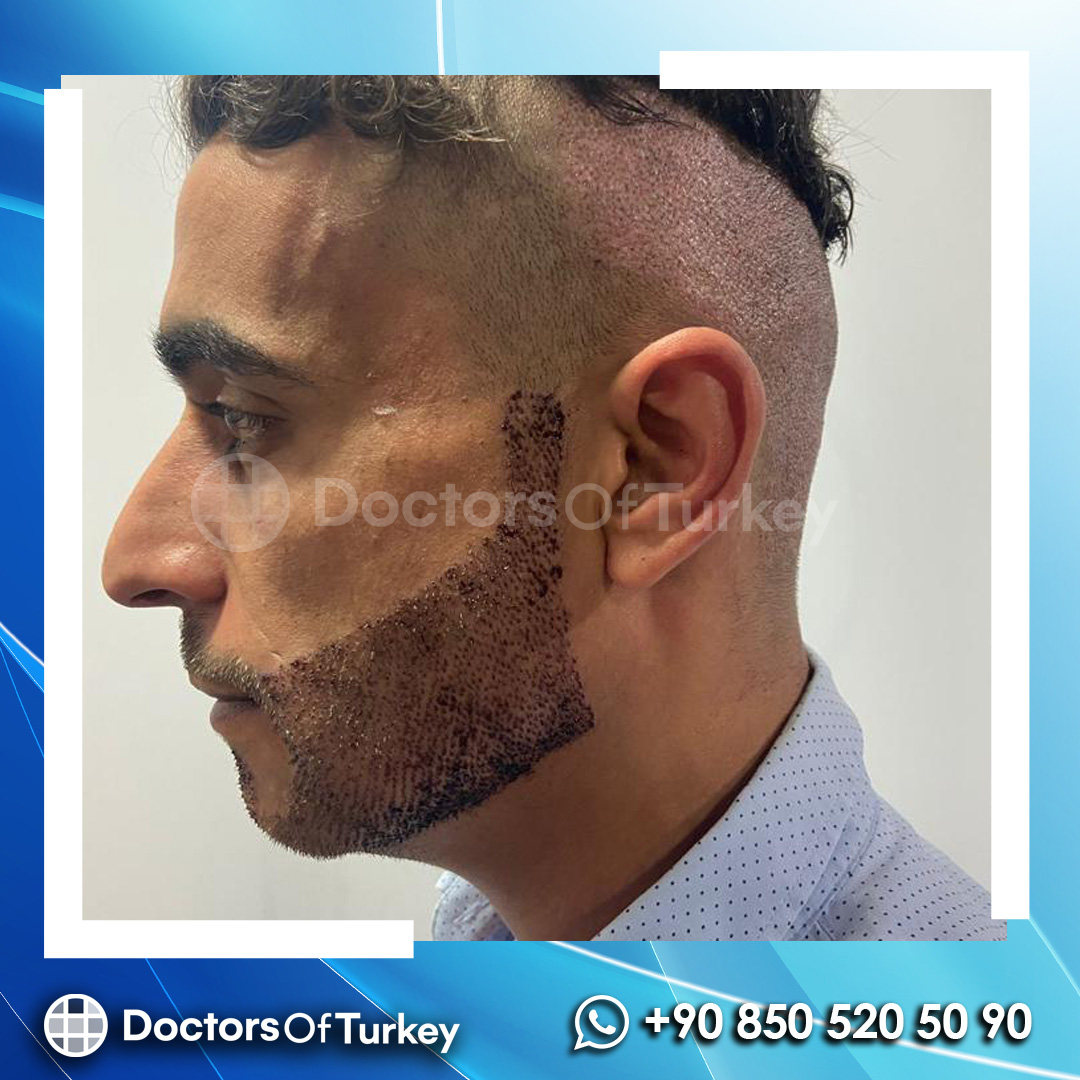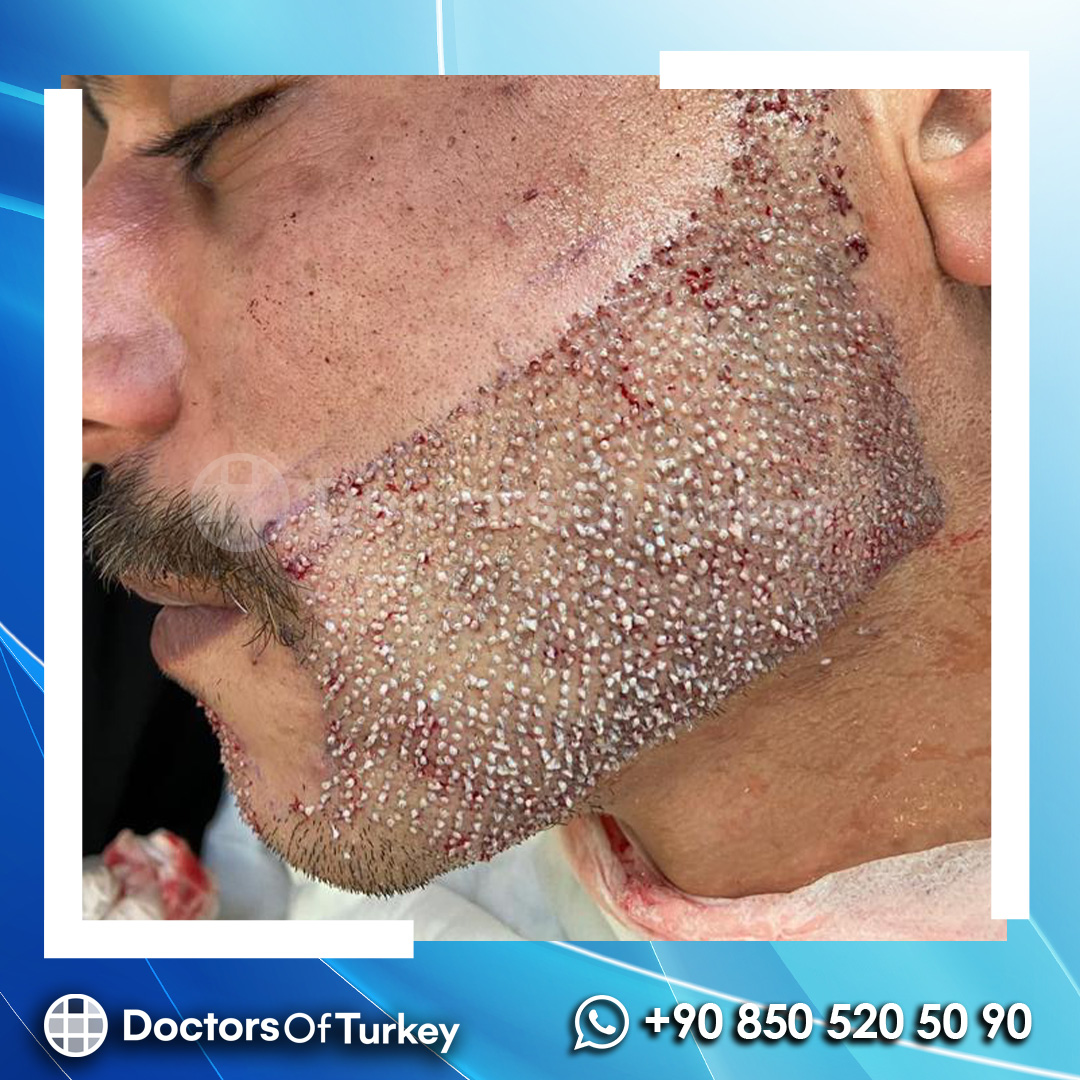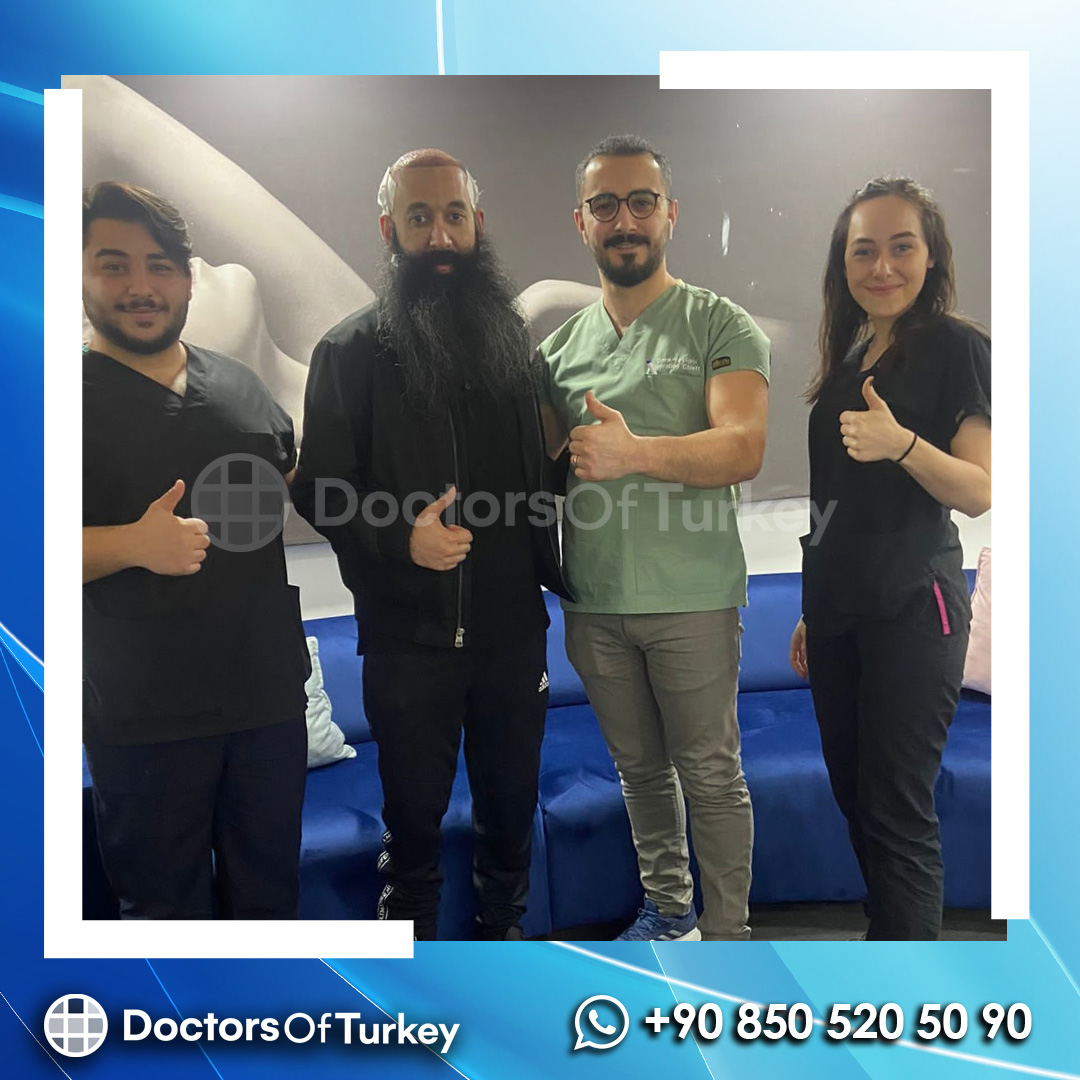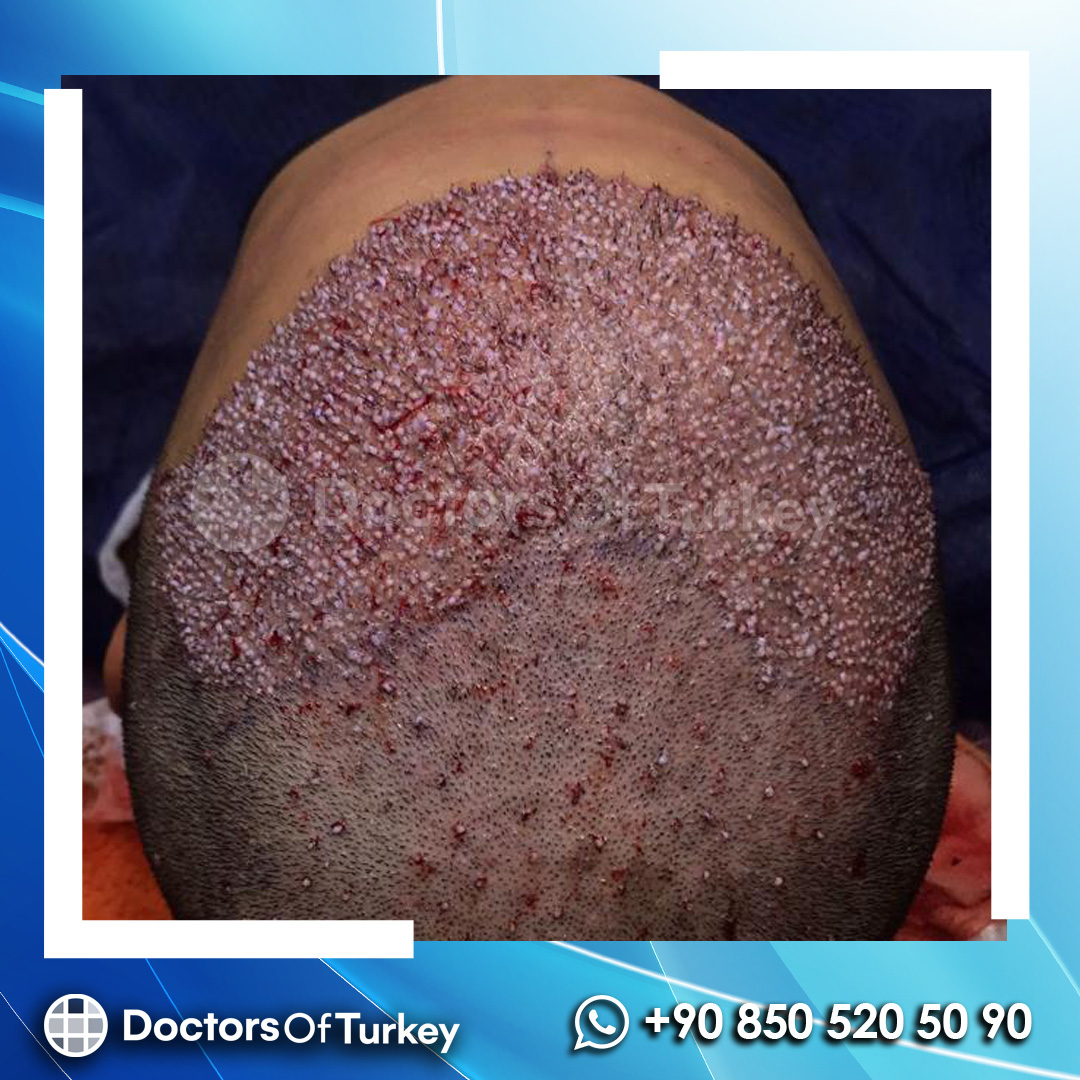Mustache Transplant
What is Mustache Transplantation?
Recently, cosmetic products offered for sale under the name of mustache-growing lotion do not ensure hair growth in areas where there is no hair growth. If you want your mustache to regain its old appearance or reach the density you want, you should have a mustache transplant operation.
Hair transplantation, Beard and mustache transplantation are similar in many points. In beard and mustache transplantation , the donor area is the hair follicles located on the nape and coded not to fall out, as in hair transplantation. If the grafts (hair follicles) on the nape are not sufficient, the chest, arm and leg regions can be used as donors .
FUE sowing technique and DHI sowing technique are generally used for graft collection and transplantation. Since mustache density can vary from person to person, it differs from hair transplantation. Generally, around 400-800 grafts are needed for transplantation .
Mustache Transplantation Information Guide
What are the Causes of Mustache Shedding?
With the success of hair transplantation with the developing technology, beard and mustache transplantation has also started to be preferred. Before beard or mustache transplantation, it should be investigated why the loss occurred in the area to be planted.
Mustache loss is one of the questions that modern medicine has not yet found an answer to. Genetic factors, hormonal disorders, stress, dietary habits, alcohol consumption, misused care products can cause the mustache to fall out.
Conditions That Can Be Corrected With Mustache Transplantation
- Rarity
- Ringworm
- mustache thinness
- Wound, scar or burn
- symmetry disorder
Techniques Used in Mustache Transplantation
- FUE Mustache Transplant
- Sapphire FUE Mustache Transplantation
- DHI Mustache Transplantation
To Whom Can Mustache Transplantation Be Applied? Am I the Right Candidate?
The criteria below show that mustache transplantation is feasible;
- Completed physical development (over 18 years old)
- People whose mustaches are shedding due to genetic and hormonal reasons,
- People with sufficient number of hair follicles in the donor area,
- People who have had a mustache transplant before, but are not satisfied, sparse or not intense enough,
- People who have trouble in the area of the mustache due to burns or wounds,
- for care and therapy and want a shortcut.
Mustache transplantation can be performed in people who have sufficient hair follicles in the donor area under the control of a specialist doctor , if no other problems are found as a result of blood tests and other techniques .
Who should not be applied mustache transplantation?
- Not recommended until age 22.
- People with chronic diseases, heart, blood pressure, kidney, liver failure,
- Those with cancer derivative diseases,
- People with panic attacks
- pregnant women,
- HIV positive or hepatitis C positive individuals,
- People whose values such as blood pressure, diabetes and diabetes are not normal,
- People with signs of hemophilia in a blood test.
If you are looking for a mustache transplant operation and want to learn which one is the best option, just contact us. After a quick examination by our specialist doctors, you will have all the answers you need.
How Long Does Mustache Transplantation Take? How Many Days Should Those Coming From Abroad Reserve For This Operation?
The operation takes 6-8 hours. Those coming from out of town or abroad should stay for 1 night and 2 days. You can return to social life on the same day. There is an operation process planned in the form of beard transplant operation on the first day and rest on the next day.
Things to Consider Before Mustache Transplantation Operation
- Smoking 7 days ago; Give up caffeine, green tea and alcohol 3 days before.
- Aspirin, as a drug with high blood thinning properties, may cause excessive bleeding during the procedure . If there is a drug that you cannot stop due to health problems, although it is a blood thinner, you should definitely inform your doctor about it.
- When deciding on your operation day, at least coincide with a period where you can rest on the day of the application.
- Make sure you have a good breakfast on the day of your operation. If your operation is in the afternoon, choose a light menu.
- Be sure to wear a button-down shirt or a zippered sweatshirt . Do not choose turtleneck sweaters and clothes that you will have to wear over your head. This may cause damage to the area where the mustache is located.
- Be sure to be at the clinic at the time specified for you.
Preparation for Mustache Transplantation Operation
moment you enter the clinic to the local anesthesia stage as a preparation stage, the procedures to be performed in the hospital are as follows;
Tests
A blood test is performed to determine whether the patient has a disease that prevents him from undergoing an operation. While the blood draw takes a maximum of one minute, the results are available until the other procedures are completed.
- Blood test
- HIV
- hepatitis B
- hepatitis C
- hemogram
- PT (bleeding time)
Information on Graft Quality and Process
After the tests are done, information is given by Medifulya's specialist doctors. In this process, while the patient is psychologically prepared for the operation, on the other hand, information is given about mustache transplantation methods, what to consider before and after the operation, and how the quality of the graft affects the success rates. Here, the goal is to share natural results and to ensure that expectations are fully purposeful, instead of unrealistic information presented to people for marketing purposes in advertisements.
Planning of Mustache Transplantation
First of all, your expectations will be evaluated with the doctor who will perform your operation. It will be determined whether your expectations can be realized with technical information. Other alternatives that can be applied will be presented to you verbally and in writing. Based on the mustache design and the agreed number of purchases, the distribution of mustaches to regions will be planned. Before the local anesthesia process starts, the last step is to shave the mustache and to put on the patient's apron in the special room allocated to you. You are now ready for the operation!
Mustache Transplantation Processes | Basic Stages of Mustache Transplantation
Mustache transplantation is the process of taking enough hair follicles from the donor area and placing the roots in the channels in the target area in accordance with the natural angle. Mustache transplant operation is carried out in four basic stages; numbing the skin, collecting the hair follicles, opening the channels and finally adding the roots to the opened channels.
Mustache Transplantation with FUE Technique
Stage One: Anesthetizing the Scalp
local anesthesia is used to numb the scalp . In the local anesthesia stage, the anesthetic agent is not injected into the scalp , but with the help of a device with a pressurized pump. The anesthetic substance is sent under the scalp by spraying with pressure, thus causing numbness in the scalp. General anesthesia is used when the doctor deems it necessary.
Second Stage: Gathering Hair Roots
FUE technique is generally used in the collection of hair follicles in Mustache Transplantation. After the donor area , which we call the safe area between the two ears, which is coded not to fall out, is prepared for the procedure, the hair follicles are collected one by one with the FUE motor. In the meantime, it is very important that the roots are not damaged. Each of these roots, called grafts , contains an average of 2-4 hairs. An average of 400 to 800 grafts are used. The amount of graft can be increased according to the need.
Third Stage: Opening the Channels
It is very important that the tissue is not damaged during the opening of the canal and that the blood circulation is not disturbed. The number of channels is directly proportional to the number of grafts to be used. After the hair follicles are collected, the grooving process in the area to be planted is performed with a metal slit or a sapphire-tipped pen.
Fourth Stage: Transplanting Hair Roots into Opened Channels
The last step after removing the hair follicles and opening the channels is the process of transplanting the hair follicles / grafts into the opened channels. The collected roots are placed one by one into the opened canals at 40-45 degree angles. After the hair follicles are carefully placed in the canals, the operation is completed. Since there is no skin incision , it does not require stitches and does not leave scars.
Mustache Transplantation with DHI Technique
DHI technique is also used in the collection of hair follicles in Mustache Transplantation. In the DHI technique, the hair follicle collection process is the same as in the FUE technique, but the process of opening the channels and transplanting the hair follicles into the channels is applied with a different method.
Stage One: Anesthetizing the Scalp
local anesthesia is used to numb the scalp . In the local anesthesia stage, the anesthetic agent is not injected into the scalp , but with the help of a device with a pressurized pump. The anesthetic substance is sent under the scalp by spraying with pressure, thus causing numbness in the scalp. General anesthesia is used when the doctor deems it necessary.
Second Stage: Gathering Hair Roots
donor area , which we call the safe area between the two ears, which is coded not to fall out, is prepared for the procedure, the hair follicles are collected one by one with the FUE motor. In the meantime, it is very important that the roots are not damaged. Each of these roots, called grafts , contains an average of 2-4 hairs. An average of 400 to 800 grafts are used. The amount of graft can be increased according to the need.
Third Stage: Opening the Channels and Planting the Hair Roots in the Opened Channels
help of micro motors, the transplantation of grafts taken from the donor area , that is, healthy hair follicles, can be done directly to the area where mustache transplantation will be performed.
- Grooving is performed with a choi surgical pen, the thickness of which varies between 0.6 mm and 1 mm .
- Grafts are collected from the donor area with a Choi pen .
- grafts It is placed in a medical device called a choi pen.
- Grafts taken with a Choi surgical pen are separated and cleaned.
- It is placed one by one on the scalp at an angle of 40-45 degrees, which is the most suitable angle.
- That is, grooving and root placement are performed in one go.
- It is a technique that does not require scarring, incisions or stitches and minimizes bleeding that may occur.
With the selection of DHI Hair Transplantation method, grooving and root placement can be performed in one go. The quality and durability of the grafts do not deteriorate externally, as it allows the grafts to be transplanted as soon as possible . . Thus, the probability of retention when transplanted is very high and is among the best hair transplant methods.
Special Gold Cream Application
donor area where the roots are taken before the patient is discharged . Special gold cream application prevents the pain, swelling and bleeding of the donor area and keeps the area sterile .
, additional treatments such as prp and mesotherapy are recommended for feeding the planted roots and growing faster .
What awaits you after the Mustache Transplantation Operation?
- You can wash your face after 48-72 hours.
- The transplanted hair follicles appear in 2-3 days.
- Due to the coagulation of the blood coming out of the small holes in the transplanted area, you may observe redness that can last 4 to 6 hours depending on the number of roots. These rashes can sometimes last for a week but are temporary.
- After the 15th day, the hair follicles enter a two-month shock shedding process after mustache transplantation.
- In the third month, 30% of the hair follicles grow on average.
- In the sixth month, 50% - 60% of the hair follicles grow.
- At the end of a year, the roots planted are now grown.
Things to Consider After Mustache Transplantation Operation
- It is recommended that the person rest the day after sowing.
- For the first 3 days after Mustache Transplant, only front buttoned clothes should be preferred. The best choice is the shirt. Because the transplanted hair grafts can be dislodged in case of any friction.
- Bandages should never be applied to the mustache area.
- The prescription given by the specialist must be strictly followed.
- Cleaning products recommended by the specialist doctor should be used regularly.
- No care products should be applied to the face against the risk of infection.
- Heavy work should not be done; Smoking, alcohol, herbal tea, cannabis, aspirin-like blood thinners, and energy drinks should be avoided for at least 3 days.
- The first week should definitely not lie face down.
- There may be itching in the area where mustache transplantation is made, it should not be scratched for the first 15 days.
Mustache Treatments After Mustache Transplantation Operation
Before 1 month, medical treatments and treatments applied directly on and inside the mustache, including anti-shedding sprays, should never be done.
Contact with Water After Mustache Transplantation Operation
- You can wash your face after 48-72 hours.
- After the operation, the face should not be washed by rubbing.
Hairdresser Procedures After Mustache Transplantation
Recommended for the first shave is the 12th day after sowing. After 12 days, mustache trimming can be done with a shaver or razor.
Why Turkey is Your Best Option for Mustache Transplantation?
What are the Costs of Mustache Transplantation in Turkey?
“Mustache Transplantation prices in Turkey”, “Mustache Transplantation prices 2022” Mustache planting application also differs in price according to the method used and the number of roots planted. Pricing per graft , which is the most common pricing method in the world , is not very common in Turkey today. Hair transplant prices are generally offered in the form of per-operation package prices. Prices vary according to the clinic where the operation is performed, the details of the package and the quality of the service provided.
Wondering About Mustache Transplantation
What is Graft ?
graft may have different meanings in medicine, it is defined as the tissue taken from any part of our body without vein and nerve connections to be transferred to another part of our body. It is the general name given to the nourishing roots to which the graft hair is attached, which is used in hair transplantation, beard and mustache transplantation and eyebrow transplantation . One graft can contain 1 to 4 hair follicles. The ratio of skin in the graft determines the number of hair follicles. For example, 2000 grafts means 4000-6000 hair follicles.
Can We Perform Mustache Transplantation in Another Area?
Mustache transplant operation is a surgical operation and tissue transplantation is performed. Unsuccessful operations will not be reversible, so they must be performed in a hospital environment, by specialist doctors, under sterile conditions. Otherwise, the risks of infection and contagious diseases arise.
When can I return to work?
- First Day / Information, Blood test and other examinations, Operation.
- Second Day / Rest
The patient can return to social life after the first wash, that is, on the day of the operation. If you are not working in a physically demanding job, you can return to work in a few days.
What is the Success Rate of Mustache Transplantation?
With the developing technology, hair transplantation treatments are achieving great success. Generally, this process is used to restore the mustache in case of excessive shedding, natural thinning or loss of the mustache due to an injury. Between 10% and 80% of the transplanted hair follicles are suitable for development and growth.
Is it understandable that I had a mustache transplant?
One of the most important features of the mustache transplantation operation, in which modern techniques are used, is that it primarily aims to restore the old appearance of the person as if he had not experienced hair loss. After the patient has undergone the mustache transplantation treatment and has survived the subsequent healing process, the mustache transplantation has an incomprehensible and natural appearance. Thanks to the developing technology, there is no unnatural appearance and pain.
Will I Feel Pain During Mustache Transplantation?
The operation is performed with local anesthesia . Therefore, pain, aches and pains are not felt.
Does the Patient Need Medication After Mustache Transplantation?
A prescription is given to the patient by the doctor. The patient should use the drugs necessary for treatment according to the doctor's advice. The maximum duration of drug use is 5 days.
After Mustache Transplantation, Does the Patient Need to Use a Special Lotion?
procedures are applied in the treatment of mustache transplantation, and therefore, attention should be paid to contact with water. The medicine or product recommended by the doctor should be used regularly, this is a direct factor in the success of the process applied to your mustache. Other care products cause irritation of mustache skin and canals.
When Will My Mustache Start Growing After Mustache Transplantation?
The mustache transplant operation lasts between 6-8 hours and the patient comfortably waits for the operation to end without feeling any pain. After the 15th day, the hair follicles enter a two-month shock shedding period after the mustache transplantation. In the third month, 30% of the hair follicles grow on average. In the sixth month, 50% - 60% of the hair follicles grow. At the end of a year, the roots planted are now grown.
Do the transplanted mustaches fall out after mustache transplantation?
The hair follicles transplanted in the mustache transplant operation shed for about 2 months, and this is an expected situation. Since the hair follicles are taken from the safe area that is coded not to fall out from birth, stronger and healthier new mustaches will grow in place of the lost mustaches over time.
Does the Patient Need a Second Session After Mustache Transplantation?
Mustache transplantation operations can be completed with a single-session operation or more operations. The efficiency of the donor area, the width of the opening area, and whether the patient's mustache loss continues are the main factors that determine the number of sessions.
Are There Risks of Mustache Transplantation?
Mustache transplantation carries risks just like any other medical intervention. Although the mustache transplantation operation takes a short time and allows you to return to social life early, there is a procedure that needs attention after mustache transplantation, so it is a long process.
As a result of deeper placement of the hair follicles, there is a possibility of formation of acne-sized cysts in the area. These dermoid cysts are common complications and heal over time.






















